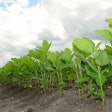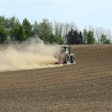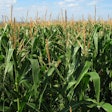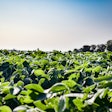
The U.S. Department of Agriculture's latest crop progress report shows that corn planting is nearing completion across major producing states, while soybean planting progress lags slightly behind the five-year average. The report, released on May 27, 2025, provides insights into the current state of crop development and field conditions across the country.
As of May 25, corn planting in the 18 states that account for 92% of the 2024 corn acreage was 87% complete, up from 78% the previous week and slightly ahead of the five-year average of 85%. Notable progress was made in Illinois, Indiana, and Iowa, with planting rates of 87%, 82%, and 76%, respectively.
Corn emergence also showed significant advancement, with 67% of the crop emerged compared to 50% last week and the five-year average of 60%. The overall condition of the emerged corn crop is reported as 68% good to excellent, indicating a strong start to the growing season.
Soybean planting, however, is progressing at a slower pace. The report shows that 76% of soybeans have been planted in the 18 states that represent 96% of the 2024 soybean acreage. This is up from 66% last week but slightly behind the five-year average of 78%. States like Illinois, Indiana, and Iowa are showing progress rates of 75%, 71%, and 92%, respectively.
The report also highlights the progress of other key crops:
- Cotton planting is 52% complete, slightly behind the five-year average of 56%.
- Rice planting is 93% complete, on par with the five-year average.
- Spring wheat planting is 87% complete, ahead of the five-year average of 80%.
Weather conditions have played a crucial role in the planting progress, with some regions experiencing favorable conditions while others faced challenges. The report indicates that 4.1 days were suitable for fieldwork on average across the country during the week ending May 25.
Soil moisture conditions remain a concern in some areas, with 23% of topsoil moisture rated as short to very short, while 77% is rated as adequate to surplus. Subsoil moisture shows a similar pattern, with 28% rated as short to very short and 72% as adequate to surplus.
















